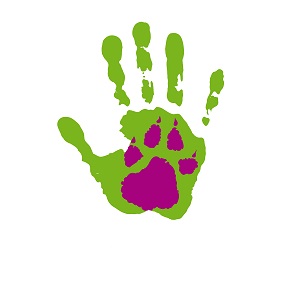Health Issues May Cause Reactivity and Aggression in Dogs
Reactivity isn’t a training thing.
It isn’t a ‘bad dog thing’
It isn’t a ‘bad training’ thing
It isn’t a complicated thing.
Recipe for a Reactive Dog
- Lack of socializing and mental stimulation 2 – 12 weeks.
- Being taught to fear walking/people/dogs 8 – 20 weeks.
- Bad Genetics
- Bad Food
- Pain
- Environment
The problem with a reactive dog is that many dog trainers have tunnel vision. They look at only one aspect of the problem. They are so engrossed dealing with the symptoms that they totally ignore the problem.
To deal with a reactive or aggressive dog you need to look at the entire dog. Then you need to look at the world from the dog’s point of view. There are a few things you can do if your dog is reactive or aggressive.
As a behavior consultant I see a wide variety of problems, but there are some a few common problems that result in reactive and aggressive dogs which have nothing to do with training.
#1: Medical Causes of Behavior Problems
Chiropractic
At least 20% of the clients I see whose dogs are suffering from canine reactivity or aggression are in pain. The most common pain is a disk out in the back, most often up by the shoulders or near the hips. There are several ways to identify this as a problem. First, I suggest a canine Chiropractor.
A gait analysis is one way of identifying if there are structure problems. A canine massage therapist will also be able to identify problems.
Your dog doesn’t need to be an athlete to cause strain on the joints or back. The most common method of putting a dog’s back out is a) jumping off a bed or chair, and b) going up or down the stairs.
Diet
It can be difficult to determine whether a dog’s diet is sufficient. It doesn’t matter what the package says, if the dog is not absorbing nutrients out of the food then it can be depleted. I’ve worked with many clients who had hair or blood tests done on their dogs, revealing a vitamin or mineral depletion. With behavior problems we most often look for a vitamin B deficiency.
I also suggest to anyone whose dog is suffering from behavior problems to stop giving their dog tap water. If you need to feed your dog tap water let it sit on the counter for at least one day, disturbing the top of the water every few hours. You can also run it through a water filter. Both of these will help dissipate the gas and chemicals in the water before feeding it to your dog.
Chemicals and Cleaners
There are ample research papers suggesting that our homes have become toxic. Everything from cleaners, air fresheners, scented products, phosphorous in laundry detergents, solvents in our dish washing liquids, dry ice in our meats, aerosol sprays, formaldehyde that leaches out of pillows and mattresses, etc. All of these leach toxins into the air.
Some animals have a very low tolerance, or their general health is weakened to the point that they are sensitive. I’ve seen some serious aggression cases improved when the dog’s overall health improves.
I do not suggest trying ‘at home’ detoxes and homeopathic remedies. Always consult a veterinarian. Pay for the blood work. Never guess or let anyone tell you that they ‘have a gift’ or are a ‘natural.’
Disease and Illness
There are three things I look for when determining whether medical issues are an underlying issue causing a dog’s behavior problems.
- Did the problem start suddenly.
- Is the dog’s behavior unpredictable or erratic?
- Does the dog act in a way that is not typical of dog behavior?
- Video the dog walking, trotting, playing several times. Play it slow. Do you see the dog ‘adjusting’ it’s weight to favor one leg, or one leg taking a shorter step/longer step, even if it is not continual.
- If you touch a spot on your dog does it’s head ‘snap back’ or does it look at you and give you a ‘wide eyed’ (you see the whites of it’s eyes) look.
- You start thinking that your dog is sad, or depressed.
A dog cannot tell us it is in pain. Many dogs are in extreme pain, or have been in pain a long time before we realize that something is wrong. In many cases, our first indication that something is wrong is a change in the dog’s temperament.
Next Step:
Before thinking that teaching a dog to ‘look’ is going to solve your problems then I suggest taking care of your dog’s wellness.
The next step is to give your dog a calm, quiet environment to allow them to regain balance and stop stressing (see our articles on trigger stacking). Next, learn all you can about living with a reactive dog.
